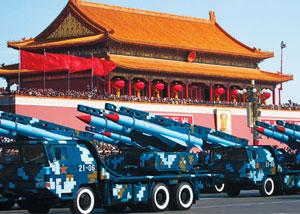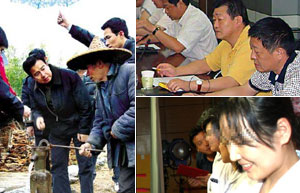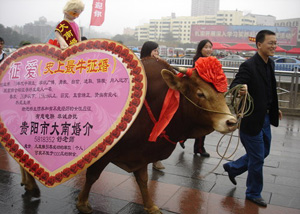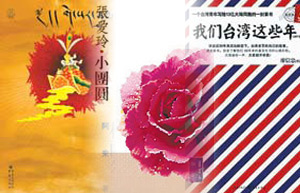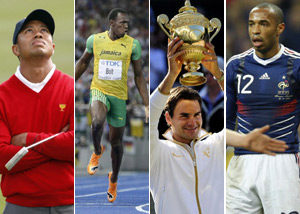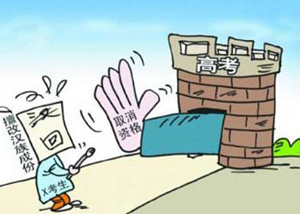2009 top ten news
Top 10 movies 2009
By Liu Wei (China Daily)
Updated: 2009-12-31 09:01
 |
Large Medium Small |
(6)Crazy Racer (疯狂的赛车)
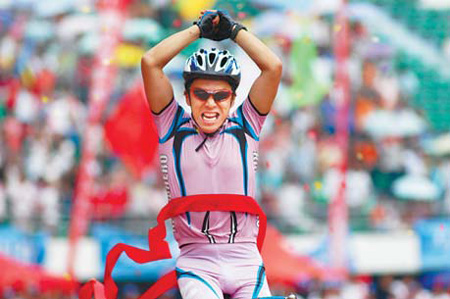
The film's director Ning Hao is called "China's Guy Ritchie" thanks to his quick-paced, smart and hilarious black comedies.
The film features four groups and more than 10 characters. Major personalities include a cyclist, a fraudulent sexual-enhancement medicine salesman and his overweight wife, several gangs and two stupid murderers.
These characters find their lives interwoven with one another - and with murder, suspense and humor - in convincing and comical ways.
Ning came up with the original storyline in late 2006, and spent eight months with eight writers drafting the script. He was so demanding that at least six writers ran out of ideas.
One of the writers used an abacus to calculate the characters' intricate relationships with each other. He described the writing process as deciphering a "calculus" formula.
Another writer drew a story map of the characters' relationships. But it was so complex that it confused even Ning.
The film was one of the funniest of the year.
(7)The Founding of a Republic (建国大业)
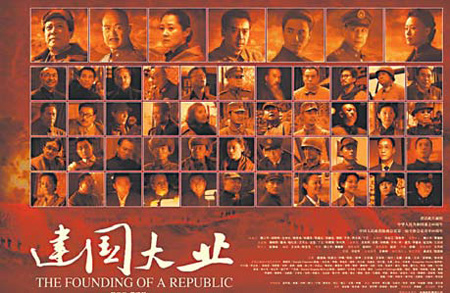
This film was an event in the industry because about 80 stars, many of whom are A-listers such as Jackie Chan, Zhang Ziyi and Jet Li, appeared in it. Some of China's most famous directors, such as Chen Kaige and Feng Xiaogang, played parts too.
And all of them worked for free.
The stellar cast is largely attributed to the clout of Han Sanping, the film's co-director and head of China Film Group (CFG), the State-owned conglomerate. Han is a senior producer and CFG is the No 1 film company in the industry.
Telling a story of how the People's Republic of China was founded, the film was a tribute to the 60th anniversary of the country's founding.
It raked in 400 million yuan ($58 million), compared to the 430 million yuan of Transformers 2 in June.
(8)The City of Life and Death (南京!南京!)
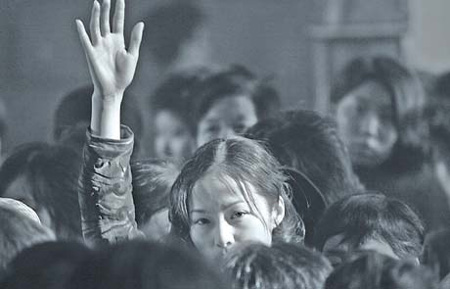
Any film on the Nanjing Massacre will create a stir in China, especially if it is directed by a young Chinese director and narrated from an original point of view.
The film was controversial because it centered on director Lu Chuan's depiction of the Japanese troops.
Usually, in film treatments of the massacre, in which about 300,000 civilians and soldiers lost their lives, Japanese troops are portrayed as devils, rather than rounded individuals.
In Lu's film, soldiers share happy moments, making a pot of tasty soup, and one of them falls in love with a comfort woman. At the same time, they were part of a fine-tuned and ruthless killing machine. Some viewers were irritated, calling Lu a traitor who tried to humanize the Japanese invaders, while others marveled at his courage to raise a new point of view.
(9)Night and Fog (天水围的夜与雾)
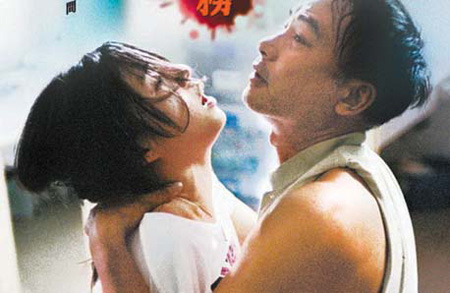
Ann Hui's follow-up to her much-acclaimed The Way We Are (天水围的日与夜) is not really a sequel, but rather a presentation of the flip side of the coin.
Tinshuiwai, the Hong Kong residential community where both stories take place, is known for the family tragedy on which Night and Fog is based. But the Chinese titles are so similar they can be seen as an organic whole.
While The Way We Are depicts the subtlety and warmth of Chinese relationships, Night and Fog dives into the violent world of one family. A middle-aged Hongkonger marries a young mainland beauty with a shady past. Her can-do spirit clashes with his slothful dependence on welfare. When violence spirals out of control, she and her twin daughters fall victim to his inner demon and to a bureaucratic system.
As usual, Hui's latest offering has great acting, clear exposition, with rich textures and much food for thought.
(10)Bodyguards and Assassins (十月围城)
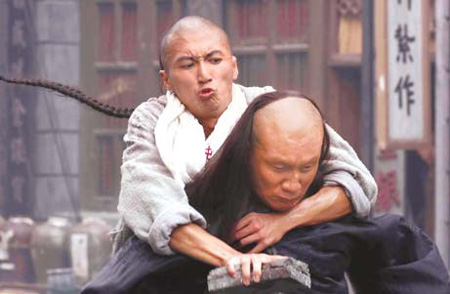
China's so-called costume blockbusters are often disappointing because they seldom live up to their hype. But not this film. The 16 A-listers embody their characters perfectly and the story - eight grassroots heroes' voluntarily protecting the revolutionary leader Dr Sun Yat-sen in 1906 - fully engage the viewers. Also, the film stands out from conventional action films by being free of action in the first half, while the second half is a kind of action tsunami of dazzling kungfu scenes. Both parts are effective. The drama part is touching and the action part exciting.
Raymond Zhou has contributed to the story
